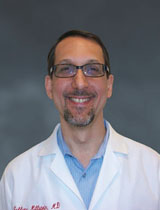Takeaway
When assuming care of patients whose clinician is retiring or departing the practice, the priority should be establishing rapport and trust. It may take time for patients to gain comfort with a new approach and treatment recommendations.

Connecting with Patients | November 9, 2023 | 1 min read
By Jeffrey Millstein, MD, Penn Medicine
One of our senior physicians recently announced that he’s retiring next year. Hearing of this brought up memories of my own clinical initiation, when I replaced a clinician who had retired after more than 40 years in practice. Wayfinding through a deluge of transitioning patients gave me some lasting insights to share.
Retiring or departing doctors leave big shoes to fill, as long-term patient-physician relationships may be deep and complex. Patients may feel reverential toward and even grieve the loss of their former clinician. Having awareness of these possibilities can help us empathize with patients who may not be new to the practice but are new to our care.
A clinician’s credibility hinges on establishing a trusting connection with patients. Before attempting to negotiate any major management changes, it’s best to work on building rapport, while helping the patient feel comfortable and supported.
When considering a change in a patient’s prior treatment regimen:
1. Ask yourself if current treatments are absolutely contraindicated or causing clear harm to the patient and consider the danger of abrupt discontinuation.
2. Explore the patient’s understanding of the purpose of their medication(s)—show compassionate curiosity and ask if they’ve tried other medication alternatives.
3. Avoid scare tactics that usually don’t work. Remember that the patient doesn’t know you well yet and knew the original prescriber very well.
4. Avoid disparaging comments about the previous clinician. Rather, consider reaching out to the retiring or departing clinician to gain better understanding of their treatment choices.
5. Give patients time to consider and gain comfort with new treatment suggestions.
This piece expresses the views solely of the author. It does not necessarily represent the views of any organization, including Johns Hopkins Medicine.

